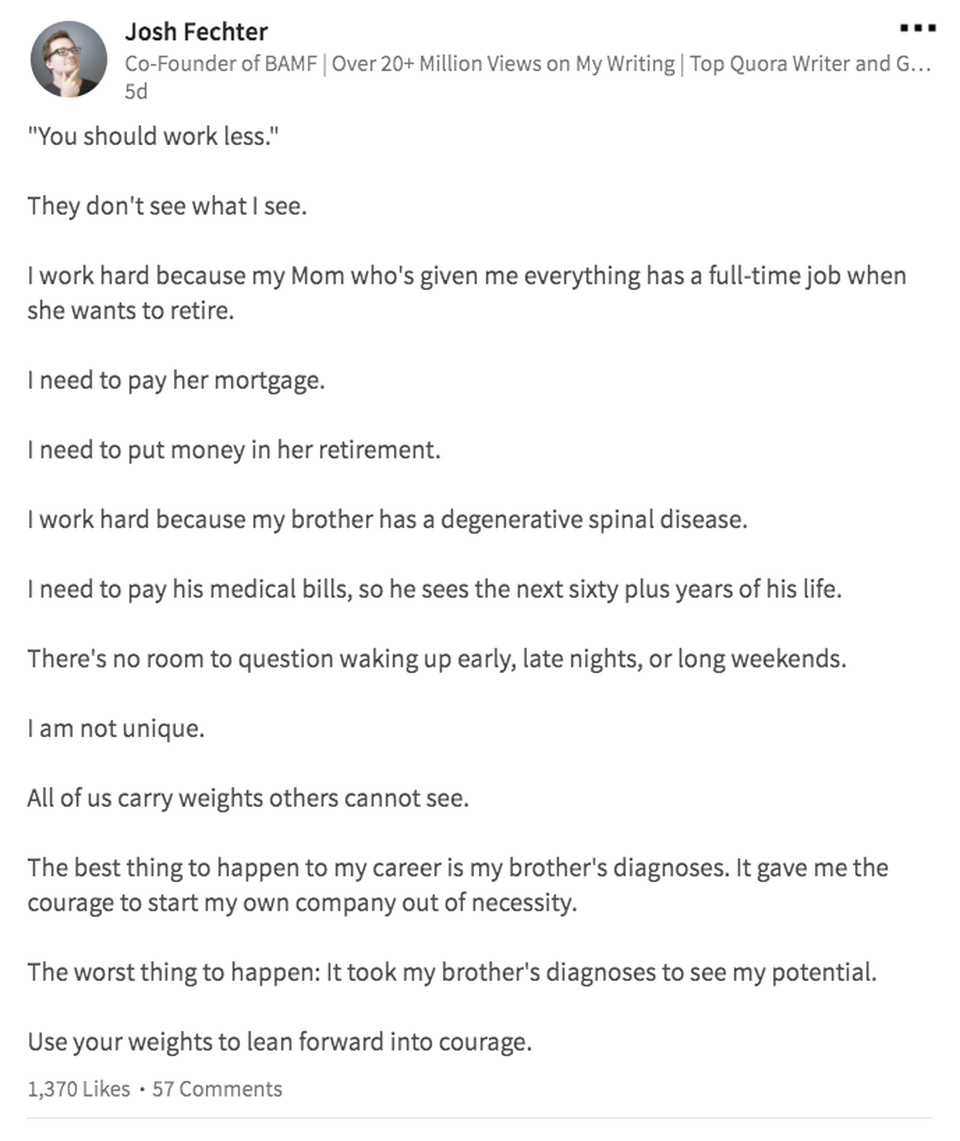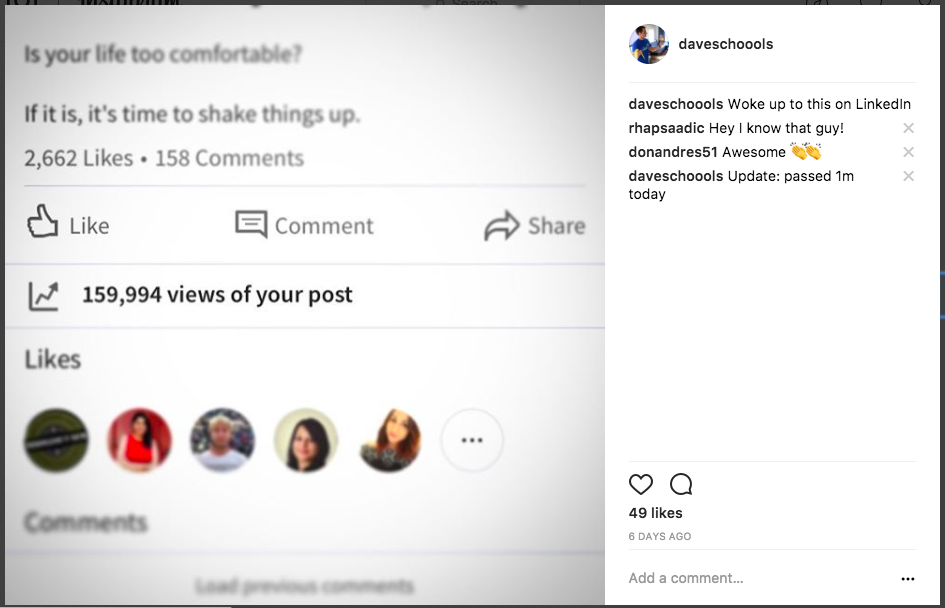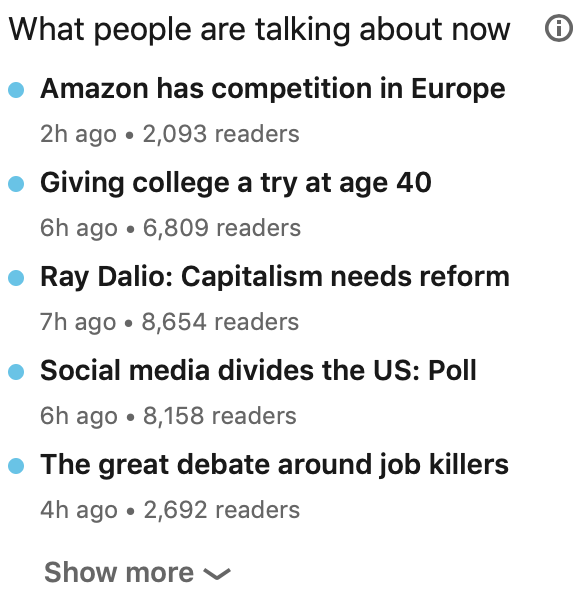LinkedIn is no longer just a hub for job seekers and recruiters to connect. In recent years, it’s proven itself as a valuable platform to share your content, engage with decision-makers, and even find influencers you can collaborate within a project or venture.
However, if you think that your LinkedIn content strategy would be anything like with your other social media accounts, think again.
LinkedIn users are a unique breed. And that’s why you can’t—and shouldn’t—approach marketing on LinkedIn the same way you’d do with other networks.
And what better way to learn how to create a LinkedIn content strategy than learning from those that have made it happen for their brands.
Here are some of the top expert advice I’ve learned to create engaging content on LinkedIn.
1. Get personal on your updates.
You may think that because LinkedIn’s filled with professionals that they would prefer updates that are serious and professional-sounding.
But, as Joshua Fechter proved in his LinkedIn posts, that’s not the case.

Could it be a stroke of luck? Not really.
Other people like journalist Dave Schools experienced the same results just by copying Fechter’s style

From these two examples, it’s apparent that LinkedIn users will engage with your status updates when you get personal and willing to show your vulnerable side.
Fechter’s shared in a public Google doc his LinkedIn status update formula, but let me give you the gist of how to do this:
- Start with sharing a gut-wrenching problem. Remember, you need to be willing to be vulnerable here. Fechter recommends choosing a problem that makes you feel like you’ve been stabbed and the knife’s twisted deep for good measure.
- Share the “aha” moment. This could be the moment when you decided that something’s got to give or a mind-blowing lesson you’ve learned.
- Go from “zero” to “hero.” Start sharing the practical steps you took to overcome the problem. End this part with sharing where you are now.
- Start a conversation. Asking a challenging question that would make your audience think will get them to engage with your post.
- Use one-liners. Break up your update into short, one-line sections because it makes it easier to read, especially on a mobile device.
2. Tell stories.
One reason why Fechter’s status update formula was so effective in getting people to engage is because it tells a story.
Storytelling works because, according to Jeff J. Hunter, it allows you to connect with your target audience on a personal level. It’s what makes you and your brand more relatable.
Hunter explains that the key here is to make your story as vivid as possible. By vivid, he doesn’t mean writing a lengthy update or article.
Instead, what he is saying is that your readers should be able to picture what you’re describing in their mind. They should feel the emotions that you want them to feel. Only by doing that can you get them to do what action you want them to take.
A great resource to develop your storytelling and writing skills is On Writing: A Memoir of the Craft by Stephen King. If you’ve read his novels, you know how King’s talent in vividly describing what’s happening in the story can get his readers to resonate with the fear the characters are feeling.
3. “Spend” $1.80 a day.
I came across this LinkedIn content strategy in a post by Gary Vaynerchuk (aka GaryVee).
He first tried this out on his Instagram account, and the results were great. So he applied this hack to LinkedIn account, and the results were just as promising.
And don’t worry! This strategy doesn’t involve spending any money.
Instead, the strategy’s name comes from the popular phrase “just giving my two cents” whenever we share our opinion or advice.
In that context, what GaryVee recommends is leaving your comments on 90 different posts on LinkedIn every day.
Of course, don’t leave a comment just for the sake of hitting the target number. That’s not going to get you the results you’re looking for.
Instead, take the time to craft a comment that will further add value to the post. Not only will this get the attention of the person who published the post, but it’s also going to cause others to engage with your comment.
Also, make sure that you’re leaving your comments on the right posts. One place to look for posts to comment on is on the “What People Are Talking About Now” section on your LinkedIn feed.

These are the posts that other people are commenting on. Adding your comments to these posts will make it quicker for others to engage with you.
You can also search for posts using hashtags related to your brand or niche.
I know, that sounds a lot. But then again, GaryVee didn’t build his brand just by taking things easy.
4. Post an article on LinkedIn.
Sharing your blog post’s link on LinkedIn will help you drive traffic back to your website.
However, if you want your followers and other people on LinkedIn to engage with your content, publish an article directly on LinkedIn.
The reason?
There are not many people posting valuable content on LinkedIn. So when you publish a native article on LinkedIn, this will quickly grab the attention of other LinkedIn users. Not only will they engage with you, but they’ll also most likely share this with those in their network.
Another reason for publishing native articles on LinkedIn is that it’s public so that anyone on LinkedIn can view it.
When writing a native article on LinkedIn, Jordan Beaumont recommends following the same principles when publishing a post on your blog.
“Start by finding a niche that you can write articles about,” Beaumont suggests. “Otherwise, you’ll find yourself competing with other LinkedIn article writers. At the same time, make sure that the niche you choose isn’t too specific. This will limit your audience, which is the last thing that you want to happen for your article.”
5. Publish videos.
LinkedIn only launched its native video feature in 2017. And it’s for this very reason why you should take advantage of publishing videos on LinkedIn as part of your content strategy.
For one thing, videos are more eye-catching on LinkedIn because it immediately stands out amidst all the text posts, images, and link shares.
Second, videos get your message across faster than other forms of content published on LinkedIn.
According to LinkedIn influencer Quentin “Q” Allums, the reason is that video engages all your senses. Also, videos give you the opportunity to show off your personality. This helps you quickly connect with your target audience and get them to engage.
One thing to remember when creating videos for LinkedIn is to keep this short and sweet. The average person only spends 24 minutes on their LinkedIn account.
Ideally, you should keep your videos under 5 minutes. So go straight to the heart of your message. Aside from keeping your videos short, 44% of LinkedIn users prefer straightforward content.
6. Plan out your LinkedIn content strategy.
The five tips I’ve shared so far will deliver results. However, if you don’t plan out your LinkedIn content strategy, the benefits you’ll experience will be short-lived.
Before publishing any content, make sure that you determine what marketing goal you want to achieve. This will help you find out which metrics to measure, and how much return on investment your business is getting from your efforts.
Creating your LinkedIn content strategy will also help you map the content you’ll share. This is crucial since publishing the right content at the right time will help you drive your prospects and leads further down through your marketing funnel. In turn, you increase your conversion rates and generate more qualified leads for your business.
Finally, having a documented LinkedIn content strategy in place will ensure that everyone in your team is on the same page as you grow your business. Discussing this with a new team member may be fine when your business is small and still starting. However, once your business begins to grow, this approach will no longer be practical.
Conclusion
The tips I’ve shared here to your LinkedIn content strategy will increase the engagement rate in the content you publish. Choose one tip, implement this, and then measure your results before you go to the next.
Ultimately, creating engaging content in LinkedIn is made of two parts.
First, don’t be afraid of sharing stories about the personal challenges you’ve overcome. It can be uncomfortable at first. But the moment you do so, you make yourself more relatable to your target audience. It helps you bring down those walls they bring up and open the door for you to connect, engage, and build a relationship with them.
Second, quality content reigns supreme. Whether you’re commenting on a post or posting a video on LinkedIn, always make sure that you provide content that’s helpful and informative. After all, you get what you give. If you deliver quality, you’ll get quality. On the other hand, if you serve junk, that’s what you’ll also get.


